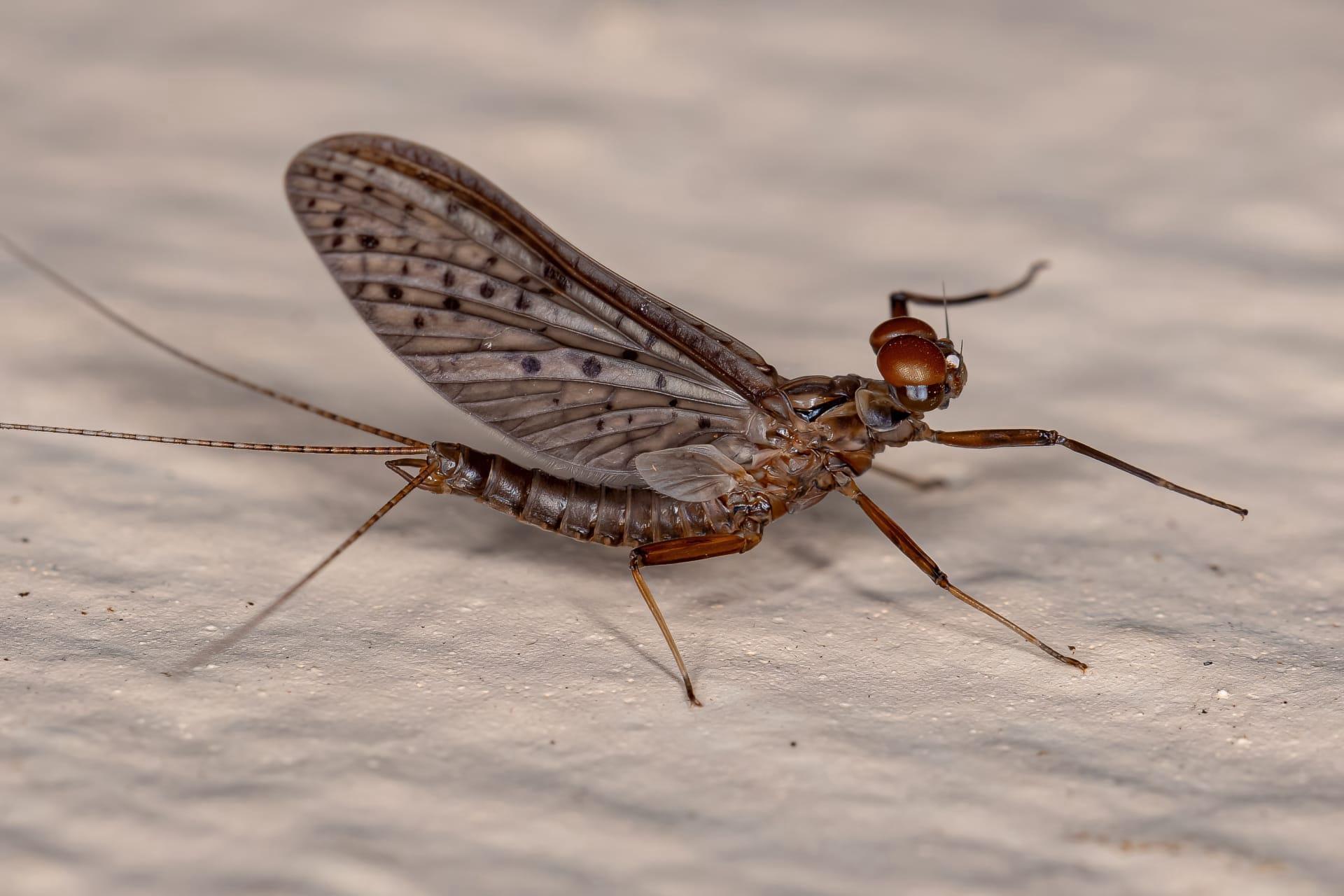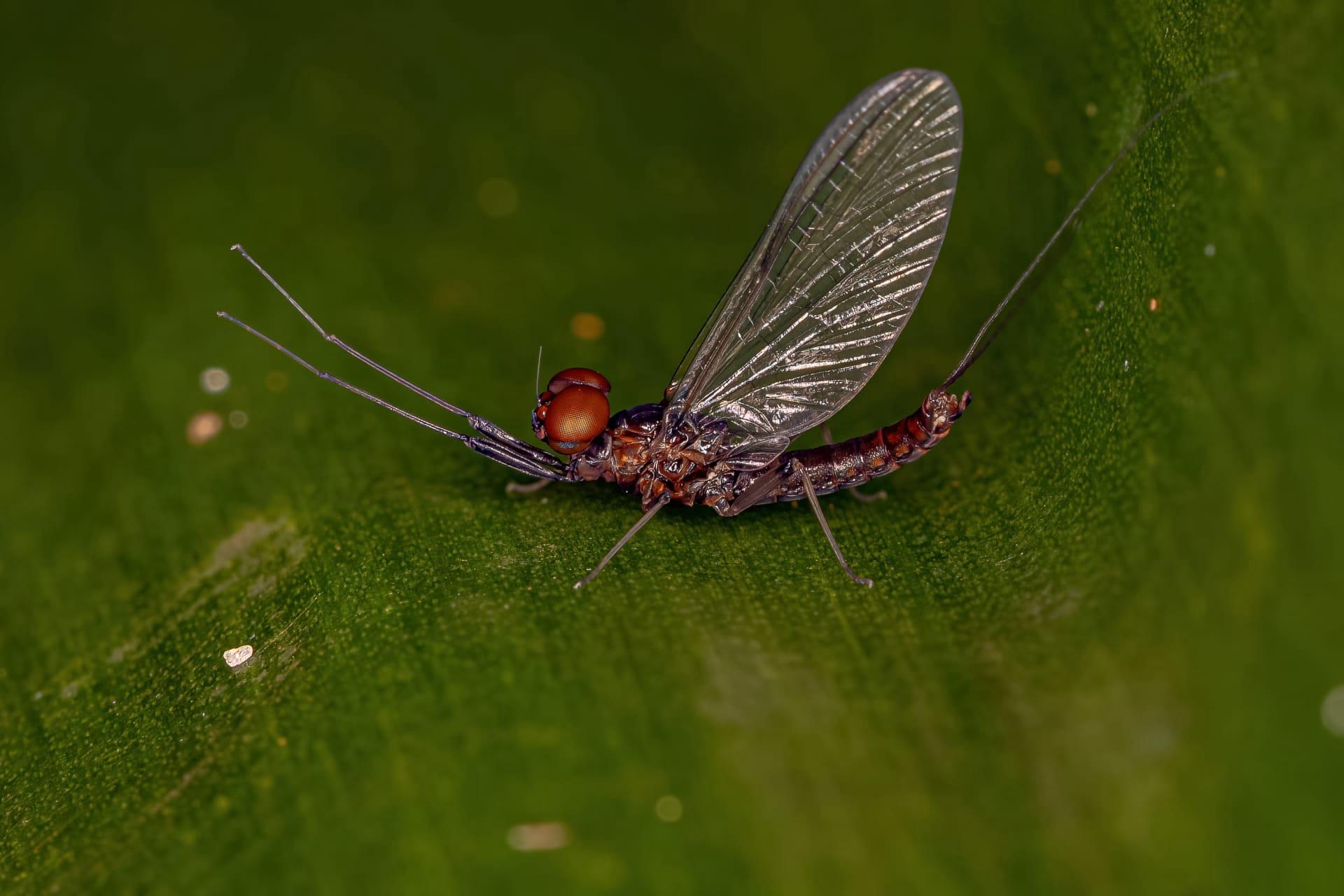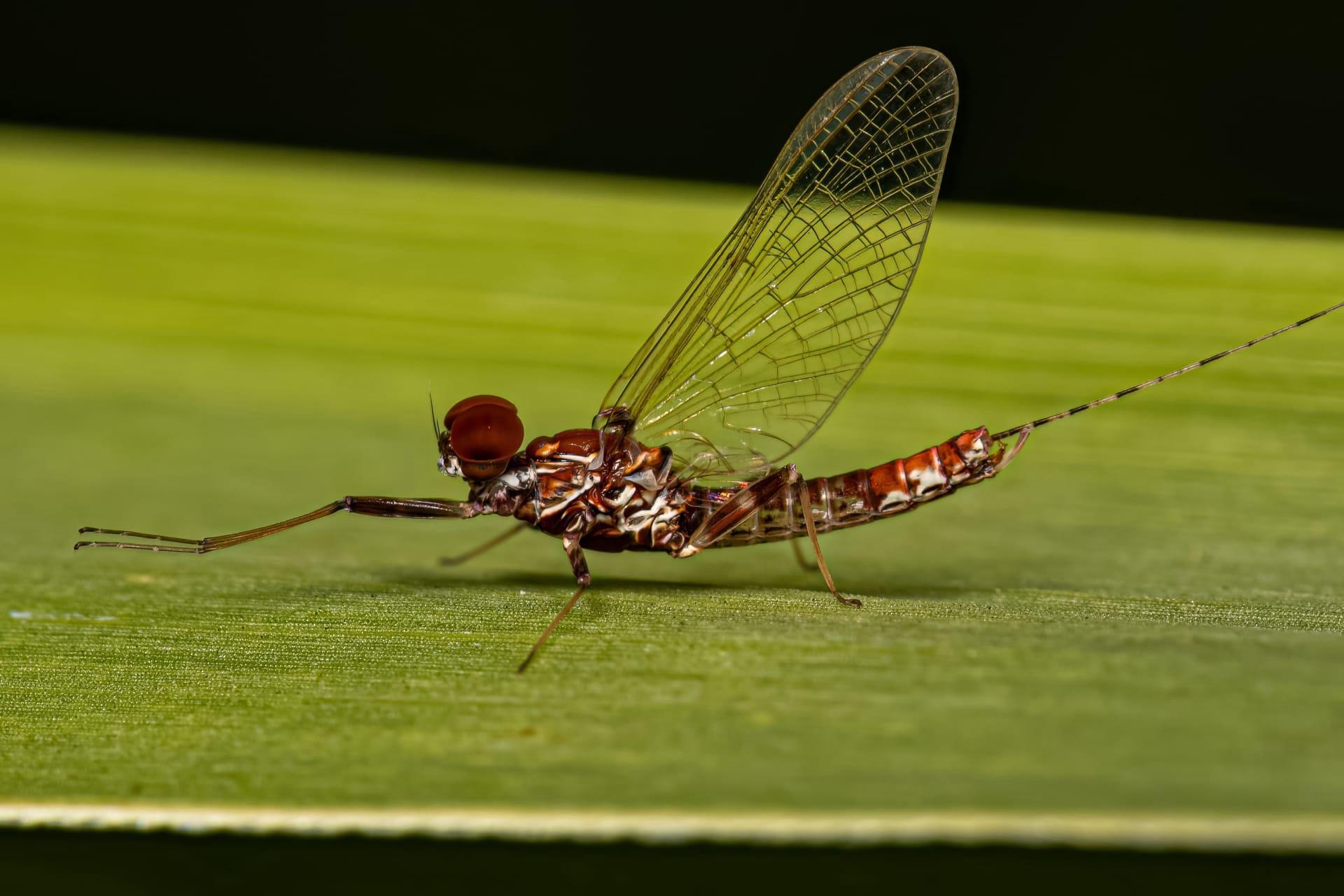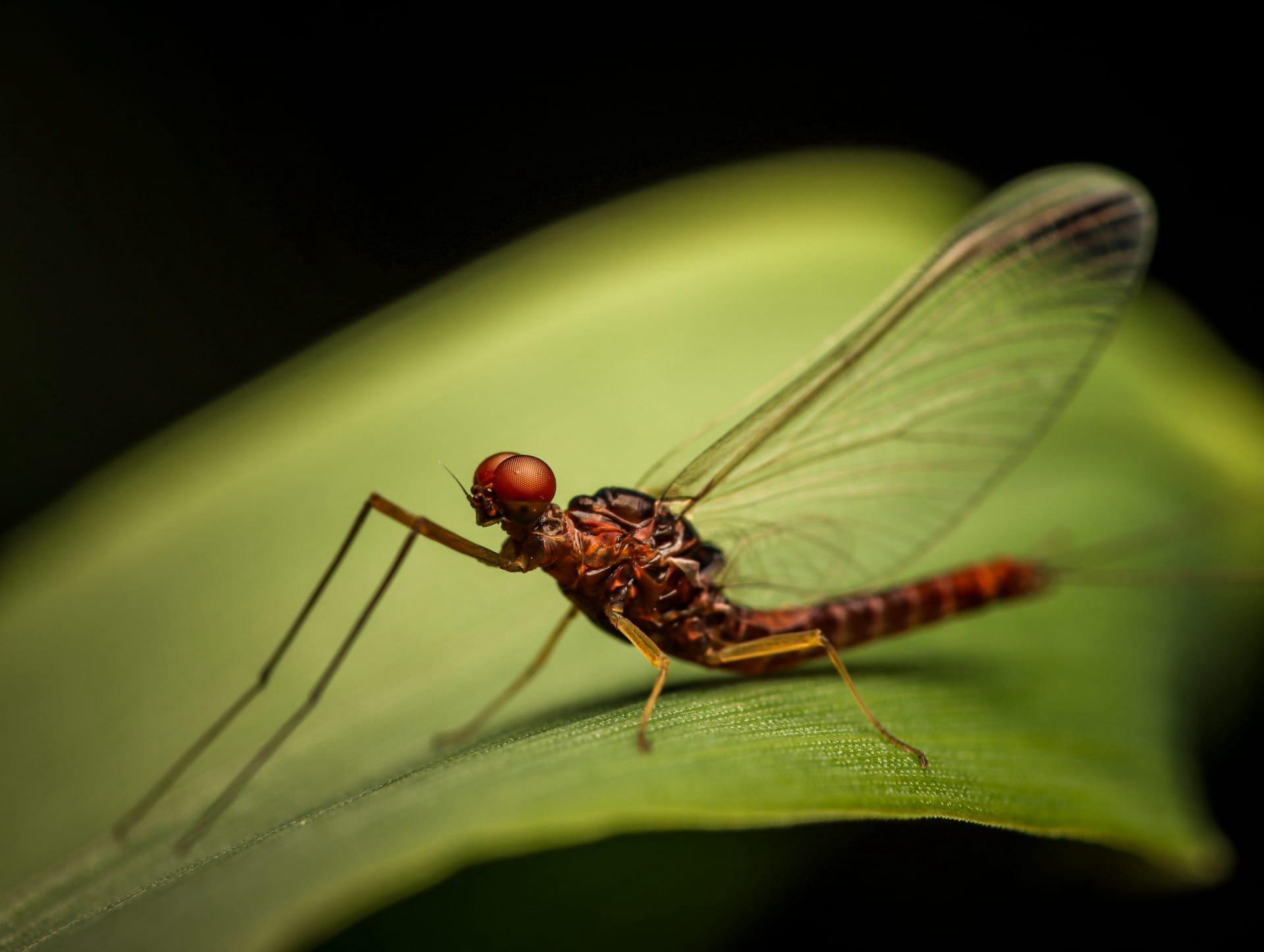1
Mayflies, known scientifically as Ephemeroptera, have one of the shortest adult lifespans in the animal kingdom. Some species live as adults for only 24 hours. During this brief period, their sole purpose is to mate and lay eggs. Fascinatingly, adult mayflies don't even have functional mouths; they cannot eat and spend their entire adult life focused on reproduction.
Mayflies start their life in water, spending one to two years as nymphs. These nymphs are aquatic and undergo a series of molts, sometimes up to 50 times. They play a crucial role in the aquatic food chain, serving as a food source for fish and other aquatic animals. This nymph stage contrasts starkly with their fleeting adult life, highlighting a unique lifecycle among insects.

2
One remarkable fact about mayflies is their synchronized mass emergence. In some species, millions of individuals can emerge at the same time, creating a phenomenon often called a "mayfly bloom." This event usually happens once a year and can be so dense that it shows up on weather radar, resembling a significant rainstorm. This synchronization helps overwhelm predators, ensuring more mayflies can survive to reproduce.
Mayflies have a special way of communicating during mating. They perform a unique aerial dance, where males form large swarms over landmarks like hills or buildings. Females fly into these swarms for mating. This dance not only facilitates reproduction but also serves as a mesmerizing natural spectacle, often drawing the attention of human observers.

3
Mayflies have an interesting feature in their wings. Unlike most insects, their hind wings are much smaller than their front wings, sometimes almost vestigial. This adaptation helps in their unique swarming and mating flight patterns, allowing for better maneuverability and control in the air.
The eyes of mayflies are also quite distinctive, especially in males. In some species, the males have large, divided eyes – one set is directed upwards to spot females flying above, and the other set looks forward or sideways to navigate and avoid obstacles. This specialized vision is critical for successful mating during their short-lived adult phase.

4
Mayflies are indicators of environmental health, especially the health of water bodies. They are sensitive to pollution and changes in water quality, making their presence a good sign of a healthy aquatic ecosystem. Conversely, a decline in mayfly populations can signal environmental problems, prompting scientists and ecologists to investigate potential causes of ecosystem stress.
Despite their name, mayflies can be found in various months, not just May. Their emergence depends on the species and environmental conditions, with some appearing in early spring while others emerge in summer or even fall. This variation in emergence time helps maintain the balance in ecosystems, as different species provide food for aquatic and terrestrial predators throughout the warmer months.

5
Mayfly larvae, or nymphs, play a crucial role in engineering their aquatic environments. They feed on algae and organic debris, helping to clean and oxygenate the water. This feeding behavior makes them essential players in maintaining the ecological balance of rivers, lakes, and streams.
In some cultures, mayflies have symbolic meanings. For instance, they are often seen as symbols of the brevity of life and the importance of living in the moment, due to their incredibly short adult life span. This symbolism is sometimes used in literature and art, reflecting the deep impression these tiny insects have made on human culture and thought.